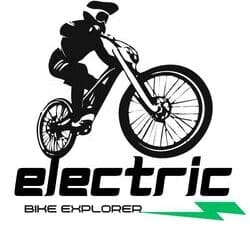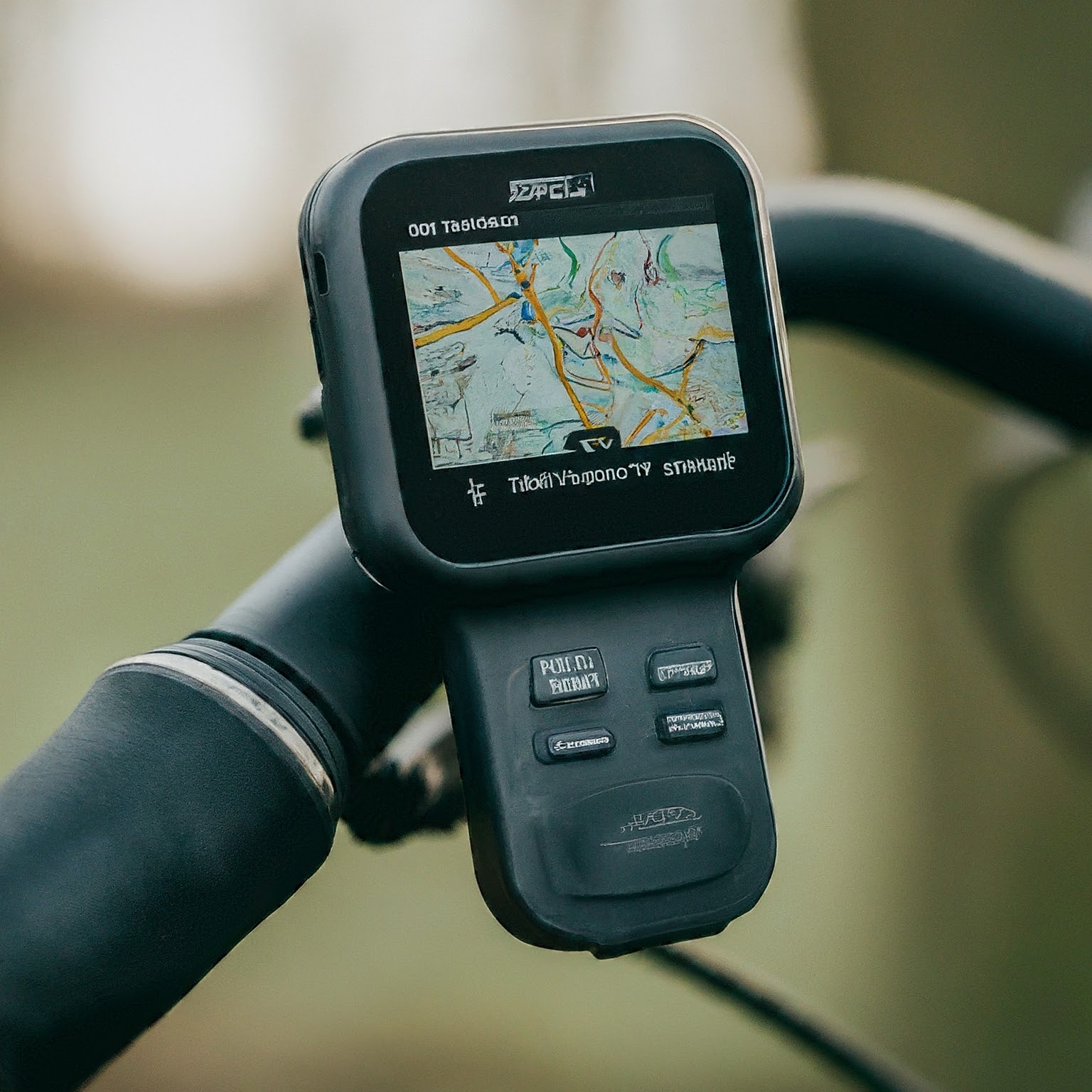How to Use GPS Navigation on Your Electric Bike
Last Updated on October 30, 2024 by Kristina
GPS technology has transformed the way we navigate, and electric bikes are no exception. Gone are the days of relying on paper maps or getting lost in unfamiliar territory. With a GPS device, you can confidently explore new routes, track your rides, and find charging stations with ease.
In this comprehensive guide, we’ll delve into the world of GPS navigation for electric bikes. Whether you’re a seasoned cyclist or a new electric bike owner, you’ll find valuable tips and information to enhance your riding experience. From choosing the right GPS device to troubleshooting common issues, we’ve got you covered.
Let’s explore how GPS can elevate your electric bike adventures.
Choosing the Right GPS Device
Selecting the ideal GPS device for your electric bike is crucial. Consider the following factors:
- Type of Device: Decide between a dedicated cycling computer or using your smartphone.
- Screen Size: A larger screen can provide better visibility, while smaller screens are more compact.
- Battery Life: Ensure the device’s battery life matches your typical ride duration.
- Mapping Capabilities: Check if the device offers detailed maps, route planning, and points of interest.
- Additional Features: Consider features like heart rate monitoring, power meters, and navigation assistance.
- Budget: Determine your spending limit and compare devices within your price range.
Why Use GPS on Your Electric Bike?
GPS navigation offers a multitude of benefits for electric bike riders. Let’s explore some key advantages:
- Route Planning: GPS enables you to plan your rides in advance, considering factors like distance, elevation, and traffic conditions. Whether you’re commuting, touring, or exploring new trails, GPS helps you create efficient and enjoyable routes.
- Turn-by-Turn Directions: Never get lost again with the convenience of turn-by-turn directions. Focus on the ride and let your GPS guide you to your destination, whether it’s a familiar route or a new adventure.
- Tracking: Monitor your rides with detailed tracking information, including distance, speed, elevation, and time. Analyze your performance, set new goals, and share your adventures with friends and family.
- Charging Station Location: Running low on battery? No problem! GPS can help you locate nearby charging stations, ensuring you can continue your journey without interruption.
- Safety: Share your location with friends or family for peace of mind, especially during long rides or in unfamiliar areas. GPS can also b
How to Set Up GPS on Your Electric Bike
The setup process varies depending on the GPS device you choose. Here are some general steps:
- Choosing Your Device: The first step is to select a GPS device that suits your needs. Options range from dedicated cycling computers to smartphone apps. Consider factors like screen size, battery life, mapping capabilities, and additional features when making your choice.
- Mounting Your Device: Securely attach your GPS device to your electric bike’s handlebars or stem. Ensure the mounting system is compatible with your device and bike. A stable mount is essential for optimal visibility and safety.
- Pairing Your Device: If using a smartphone app or a device that requires pairing, connect it to your bike’s computer or sensors (e.g., speed sensor, heart rate monitor). Follow the device manufacturer’s instructions for the pairing process.
- Charging Your Device: Before your ride, ensure your GPS device is fully charged. Battery life can vary depending on the device, so check the manufacturer’s specifications for estimated usage time.
- Calibration: Some GPS devices require calibration to ensure accurate readings. This process involves aligning the device’s internal compass with the Earth’s magnetic field. Consult your device’s manual for specific calibration instructions.
Google Maps: Your Electric Bike’s Copilot
Google Maps is a versatile option for electric bike navigation. Here’s how to make the most of it:
- Cycling Mode: Optimize your routes for biking with Google Maps’ cycling mode. This feature prioritizes bike paths, avoids busy roads, and considers elevation changes, helping you find the most suitable paths for your electric bike.
- Real-Time Traffic: Stay informed about traffic conditions with Google Maps’ real-time traffic updates. Avoid congested areas and find the quickest routes to your destination, saving time and energy.
- Offline Maps: Download maps for offline use to ensure seamless navigation even in areas with limited or no cellular coverage. This is especially useful for long rides or areas with spotty reception.
- Charging Station Search: Easily locate nearby charging stations with Google Maps’ search function. Plan your rides accordingly and avoid running out of battery power.
RELATED CONTENT
Wahoo ELEMNT BOLT: A Dedicated Cycling Computer
For cyclists seeking a dedicated GPS device with advanced features, the Wahoo ELEMNT BOLT is a popular choice. Let’s explore its key capabilities:
- Customizable Screens: Tailor your ride experience with customizable screens displaying essential data like speed, distance, heart rate, power output, and more. Create custom data fields to track the metrics that matter most to you.
- Route Planning: Plan your rides with precision using the Wahoo ELEMNT BOLT. Create custom routes, upload GPX files, and explore new paths with confidence.
- Navigation: Benefit from turn-by-turn navigation directly on your device, guiding you through your chosen route with ease. This feature is especially helpful for long rides or unfamiliar terrain.
- Integration: Connect your ELEMNT BOLT with other cycling sensors and apps to expand its functionality. Track your performance, analyze your data, and share your rides with the cycling community.
GPS Accuracy on Electric Bikes
While GPS technology has made significant strides, it’s essential to understand the factors that can influence GPS accuracy on your electric bike:
- Factors Affecting GPS Accuracy: Several factors can impact GPS accuracy, including satellite visibility (obstructed by buildings, trees, or tunnels), atmospheric conditions, and the quality of the GPS receiver in your device. Additionally, electric bike motors and electronic components can potentially interfere with GPS signals.
- Importance of Understanding Limitations: While GPS is generally reliable, it’s crucial to be aware of its limitations. In some cases, GPS signals may be weak or temporarily unavailable, especially in urban areas or remote locations. Relying solely on GPS without paying attention to your surroundings can be risky. Always prioritize safety and use GPS as a supplementary tool for navigation.
Using GPS for Commuting, Touring, and Long Distance
GPS navigation offers distinct advantages for various types of electric bike riding:
- Commuting: GPS is a valuable tool for daily commutes. It helps you find the most efficient routes, avoiding traffic congestion and maximizing your time. Real-time traffic updates can help you adjust your route if needed. Additionally, GPS can assist in locating bike-friendly infrastructure, such as bike lanes and paths.
- Touring: Going on unforgettable adventures with the help of GPS. Plan multi-day tours, explore new regions, and discover hidden gems. GPS provides essential information like distance, elevation, and points of interest. You can also share your routes with fellow cyclists or create personalized maps.
- Long-Distance Riding: GPS is indispensable for long-distance rides. It helps you plan your journey, find charging stations, and stay on track. Real-time data on distance, battery level, and elevation can be crucial for managing your ride effectively. Additionally, GPS can help you find accommodations and other essential services along your route.
Troubleshooting Common Electric Bike GPS Issues
Here’s a table outlining common electric bike GPS issues and troubleshooting steps:
| Issue | Steps |
|---|---|
| Poor Signal | Check for obstructions like trees or buildings. Move to a clear area for better reception. Restart your GPS device. Ensure software is up to date. Check Bluetooth or Wi-Fi connection (if applicable). Enable location services on your smartphone (if using a GPS app). |
| Inaccurate Readings | Calibrate your GPS device according to manufacturer instructions. Check for sensor malfunctions (e.g., speed sensor). Ensure a secure mounting position for the device. Consider using a different GPS app or device for comparison. Check for GPS signal interference from other electronic devices. |
| Device Malfunctions | Restart your GPS device. Check for battery life and replace if necessary. Reset the device to factory settings (consult manual). Contact the device manufacturer for support. Check for firmware updates and install if available. |
FAQs
A: The best choice depends on your needs and preferences. Dedicated GPS cycling computers offer specialized features and longer battery life, while smartphones provide versatility and access to a wider range of apps. Consider factors like screen size, battery life, desired features, and cost when making your decision.
A: Using GPS can slightly increase battery consumption due to the device’s power usage. However, the impact is generally minimal. To conserve battery power, consider using offline maps, reducing screen brightness, and closing unnecessary apps.
A: GPS is essential for bike-sharing systems. It allows companies to track the location of bikes, manage availability, and implement anti-theft measures. Riders can use GPS to locate nearby bikes and navigate to their destination.
A: While GPS can be a valuable tool in bike theft recovery, it’s not a guaranteed deterrent. Some GPS trackers can be hidden within a bike frame and used to locate a stolen bike. However, prevention is key. Use high-quality locks, park your bike in secure areas, and consider additional security measures.
A: GPS is useful for organizing and coordinating group rides. Ride leaders can plan routes and share them with participants. GPS devices or smartphone apps can help riders stay together, track their progress, and communicate with the group.
A: While GPS doesn’t directly assist with bike maintenance, it can indirectly contribute by providing data on your riding habits. For example, tracking elevation changes can help identify areas where your bike’s suspension might need attention. Additionally, some GPS devices offer integration with bike computer systems that can monitor bike performance and identify potential maintenance issues.
Conclusion
GPS technology has transformed the way we experience electric bike riding. By understanding how to effectively use GPS, you can enhance your adventures, improve safety, and optimize your rides. From planning routes to tracking your performance, the possibilities are endless.
Remember to experiment with different GPS devices and settings to find what works best for you. Share your experiences and tips with fellow electric bike enthusiasts in the comments section below. We encourage you to explore additional resources and online communities to deepen your knowledge of GPS navigation.
Happy riding!
External Sources:
Kristina is not just an enthusiast but a true authority on electric bikes. Nestled in the coastal beauty of Virginia, Kristina has found the perfect backdrop for her passion for electric biking. As a dedicated wife and homeschooling mom, her life revolves around family, faith, and the thrill of adventure.
Originally hailing from Ohio, Kristina's journey with electric bikes began as a curiosity and quickly evolved into a deep expertise. Her blog is a testament to her love for electric biking, combining her fascination for eco-friendly transportation with her coastal lifestyle.
When she's not cruising the beach on her electric bike, you'll find Kristina indulging in her other loves: long walks along the shore, getting lost in a good book, and cherishing moments with her loved ones. With a heart as big as her love for animals, especially cats, Kristina brings a unique perspective to the electric bike world, grounded in her strong faith in God and her dedication to a sustainable lifestyle.
Through her blog, Kristina shares her extensive knowledge of electric bikes, offering valuable insights, tips, and recommendations to fellow enthusiasts. Whether you're a seasoned rider or a newcomer to the electric bike scene, Kristina's blog is your go-to source for all things electric biking, fueled by her passion, expertise, and the scenic beauty of coastal Virginia.

